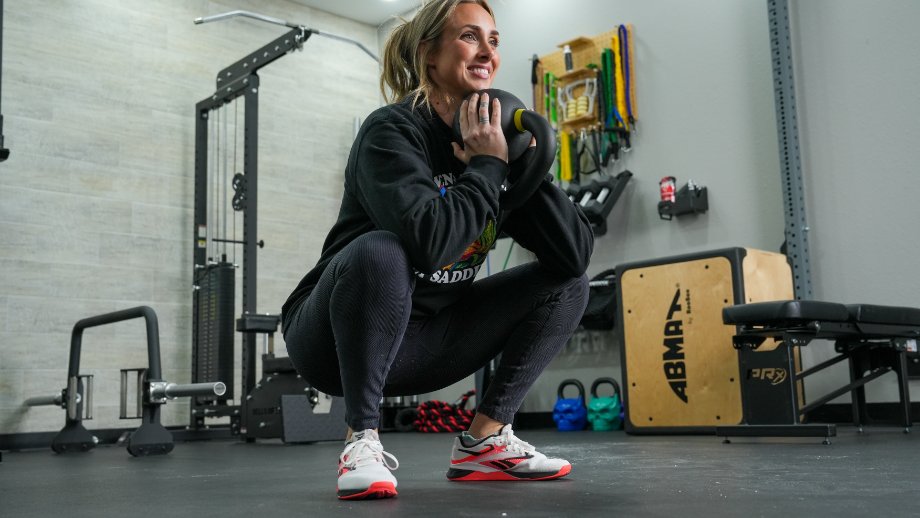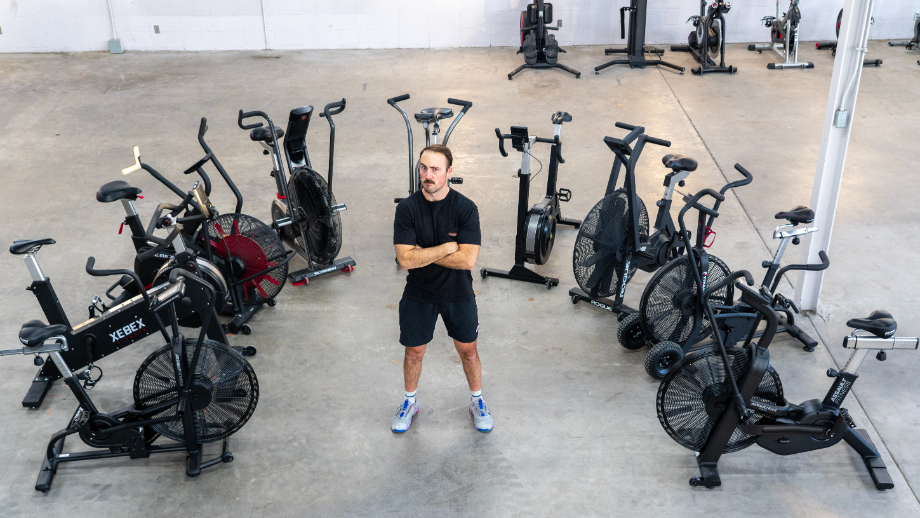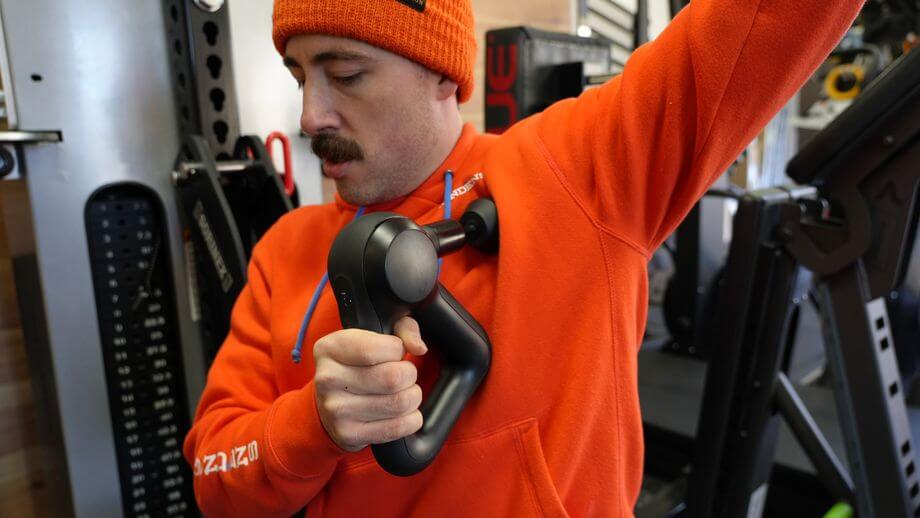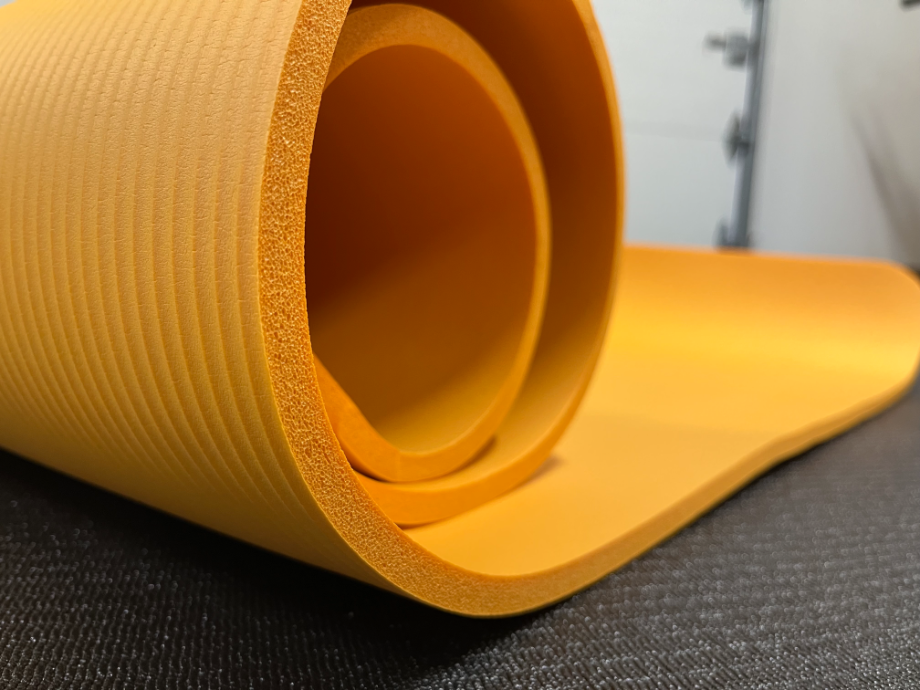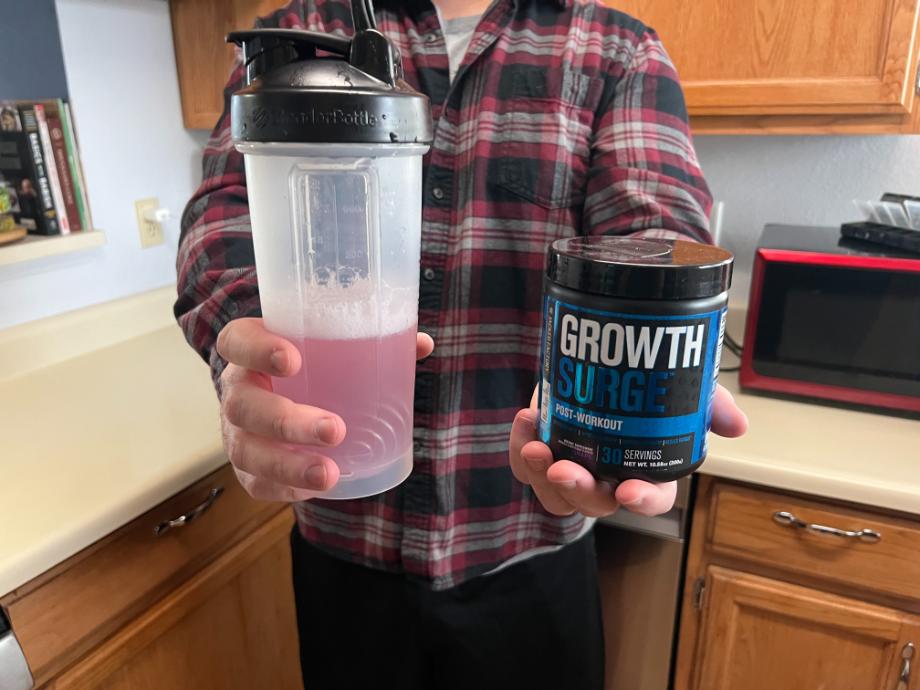Training to hoist a heavy barbell overhead is the standard if you’re into strength sports or doing a powerlifting workout, but how often do you need to move that much weight in your everyday life? You don’t need to be Hercules to do most housework, go for a long walk, or even carry your groceries up several flights of stairs. But you do need muscular endurance, or the body’s ability to exert force against some or no resistance for an extended period of time to get the job done.
Today, we’re discussing muscular endurance—including what it is, why it matters, and our favorite muscular endurance exercises—with Caine Wilkes, OLY, USAW-L1, and GGR senior staff writer.
What Is Muscular Endurance Training?
Our bodies rely on fast-twitch muscle fibers for quick or explosive movements. Activities like sprinting, going hard in the paint for a sweet dunk, thrusting a heavy barbell overhead during the split jerk, or even throwing your hands out to catch your cell phone when you accidentally drop it all use fast-twitch muscle fibers.
That’s great when the need arises, but everyday life often doesn’t happen at breakneck speeds. Jogging, hiking, swimming, cross-country running, and even working a long shift on your feet are examples of when your slow-twitch fibers—responsible for muscular endurance—will be predominantly called upon instead.
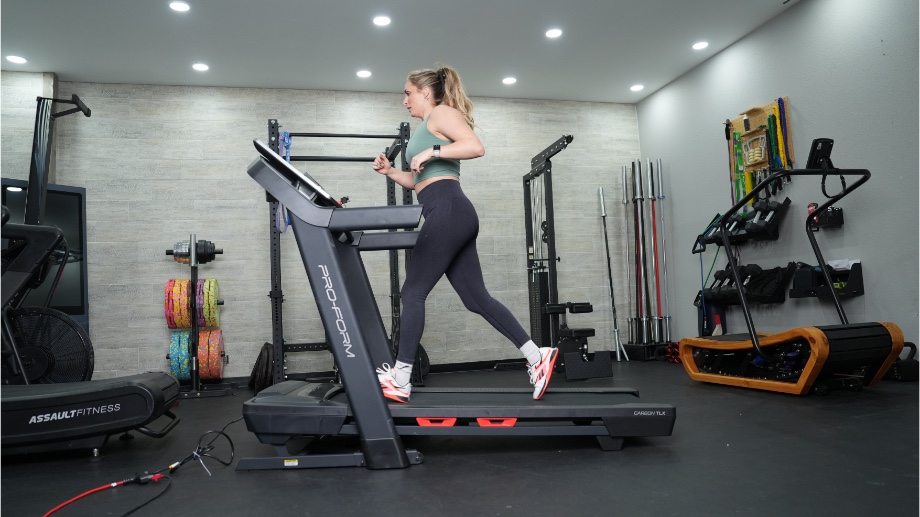
According to Sports (Basel)1, “slow-twitch fibers are seen in high abundance in elite endurance athletes, such as long-distance runners and cyclists,” while “ fast-twitch…fibers are abundant in elite power athletes, such as weightlifters and sprinters.”
Muscular endurance training can help you develop these slow-twitch muscle fibers to handle longer periods of activity by targeting and strengthening them, much like any other muscle group.
11 Best Muscular Endurance Exercises
So, what exercises are good for improving muscular endurance? Here are our 11 favorites:
- Plank
- Bodyweight squat
- Lunge
- Farmer’s walk
- Push-up
- Biceps Curl
- Deadlift
- Kettlebell swing
- Bench press
- Shoulder press
- Calf raise
Plank
Muscle groups worked: Core muscles, upper body, lower body
Why do it: The plank exercise is one of the best isometric exercises, providing muscle activation throughout your entire body. Gradually increasing the duration is effective for training your muscles to withstand fatigue longer and longer.
How to do it:
- Start on all fours on the floor.
- Step both feet back, entering the high plank position.
- Drop to your forearms, keeping your core tight, back flat, and neck neutral.
- Hold for the desired duration.
RELATED: 13 Plank Exercises and Variations
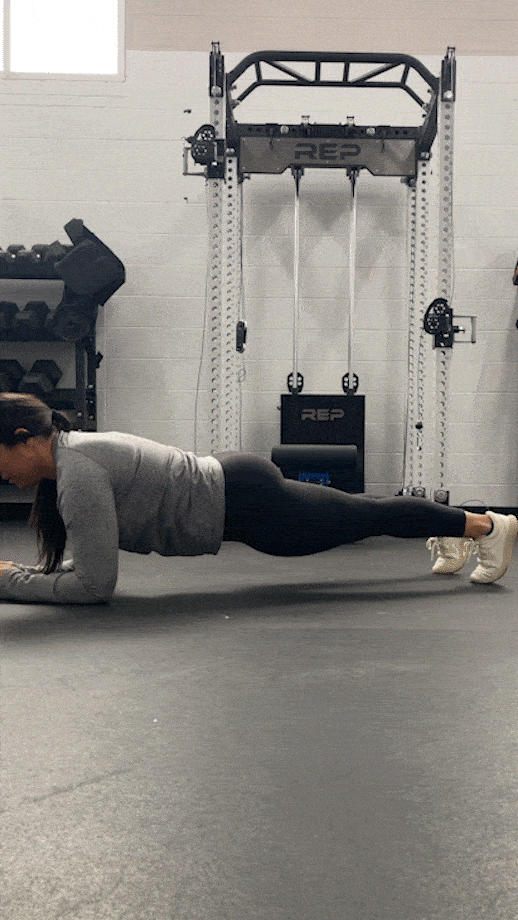
Bodyweight Squat
Muscle groups worked: Glutes, quads, hamstrings, calves, adductors, hip flexors
Why do it: “Heavy loaded squats are incredible for building lower-body strength and explosive power,” says Caine Wilkes, OLY, USAW-L1, “but setting the barbell aside in exchange for bodyweight squats will work wonders for your slow-twitch muscle fibers, especially when using higher rep schemes.”
How to do it:
- Stand with your feet shoulder-width apart, your chest tall, and your eyes forward.
- Push your hips back and bend your knees as though you’re about to sit in a chair.
- Continue until your thighs are nearly parallel with the floor.
- Pause, then slowly return to the starting position.
RELATED: What Muscles Do Squats Work?
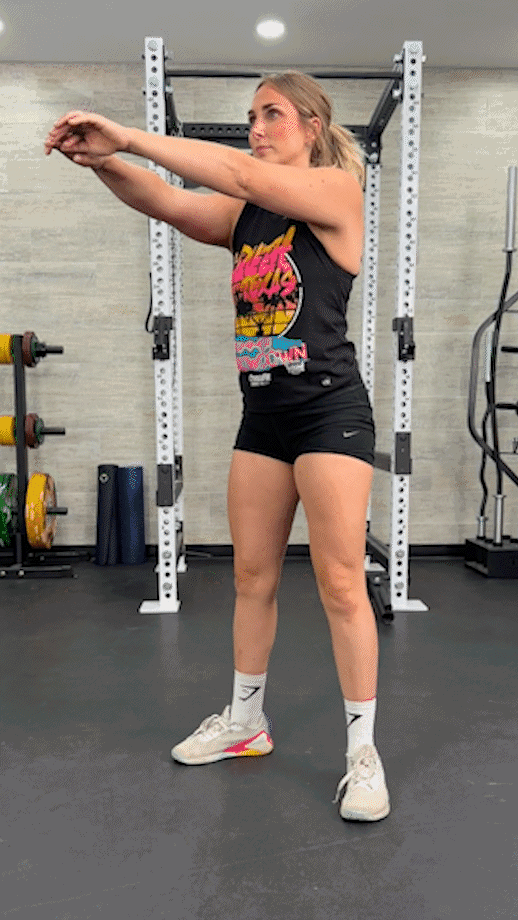
Lunge
Muscle groups worked: Glutes, hamstrings, quads, calves
Why do it: Lunges are a comparable (arguably better) bodyweight exercise for building endurance in your lower body. You’ll target all of the major muscle groups in your legs while conditioning the body to handle more and more physical activity over time.
How to do it:
- Stand with your feet shoulder-width apart.
- Take a big step forward with one leg.
- Lean into your front leg, bending your knee to form a 90-degree angle. Allow your back knee to bend simultaneously, also forming a 90-degree angle as it lightly taps the floor.
- Drive through the front heel and step back to the starting position.
- Repeat the movement with your other leg.
- Alternate sides for each repetition until the set is complete.
RELATED: Lunges Exercise
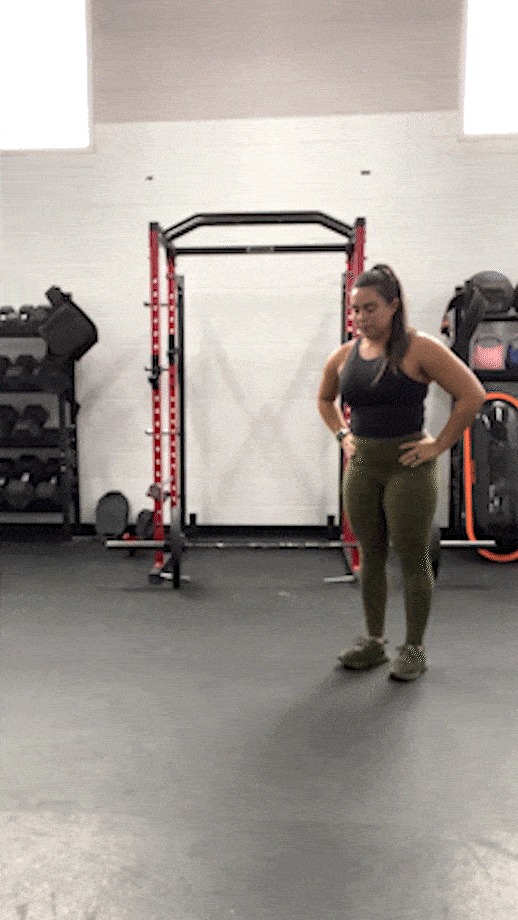
Farmer’s Walk
Muscle groups worked: Upper body, lower body, core
Why do it: The farmer’s walk replicates the daily tasks of carrying heavy loads throughout the farmstead, helping you build muscular strength, size, and (of course) endurance.
How to do it:
- Grab a pair of dumbbells or kettlebells and place them down on either side of your body.
- Reach down, grip the handles, and deadlift the weights to your sides as though holding a suitcase in each hand. Keep your chest tall, shoulders down and back, and core tight.
- Begin to walk by taking small steps in a straight line.
- Walk for the desired distance or duration, then rest.
RELATED: Farmer’s Carry
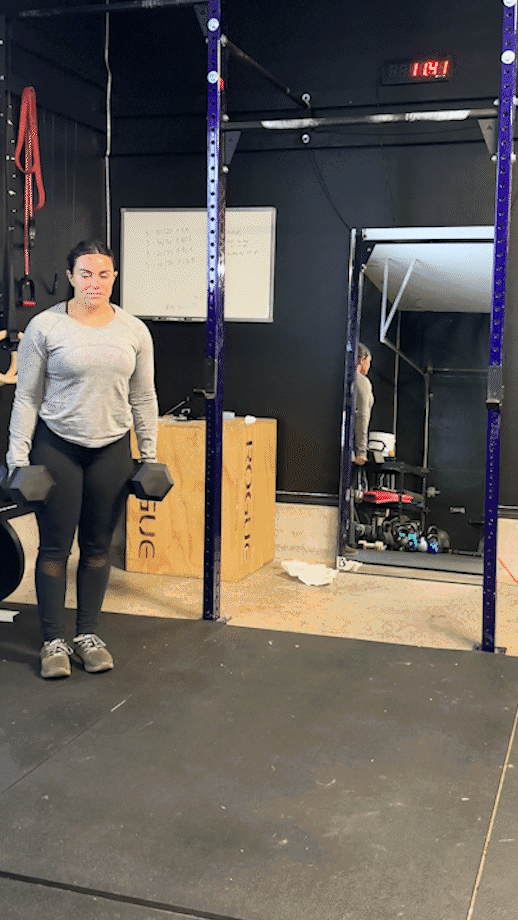
Push-Up
Muscle groups worked: Chest, delts, triceps, biceps, traps, lats, core
Why do it: “Bodyweight exercises done in higher quantities help condition the body to withstand fatigue for greater periods of time as you progress,” explains Caine. “Push-ups are no exception. Performing a high number of reps of push-ups helps build upper-body muscle endurance.”
How to do it:
- Place your hands on the floor with your wrists stacked directly beneath your shoulders.
- Step both feet back so that your body forms a straight line from your head to heels.
- Lower your body towards the floor by bending your elbows.
- Continue until your chest lightly taps the floor, then pause.
- Push your body back to the starting position.
RELATED: What Muscles Do Push-Ups Work?
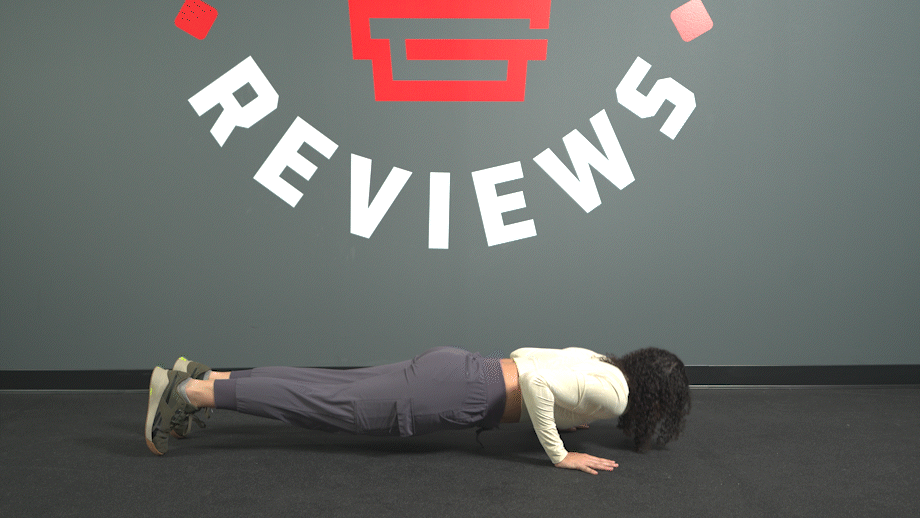
Biceps Curl
Muscle groups worked: Biceps, forearms
Why do it: Biceps curls are versatile as they can be performed with a barbell, dumbbells, cable attachment, or resistance band. They also help improve pulling power, which will let you perform tasks that involve pulling for greater periods of time as you progress.
How to do it:
- For a barbell biceps curl, load a barbell to the desired weight.
- Grip the bar with an underhand grip and hold it in front of the body.
- Curl the bar toward your shoulders while keeping your elbows stationary.
- Squeeze your biceps at the peak position.
- Slowly lower the bar back to the starting position.
RELATED: Best Biceps Workout
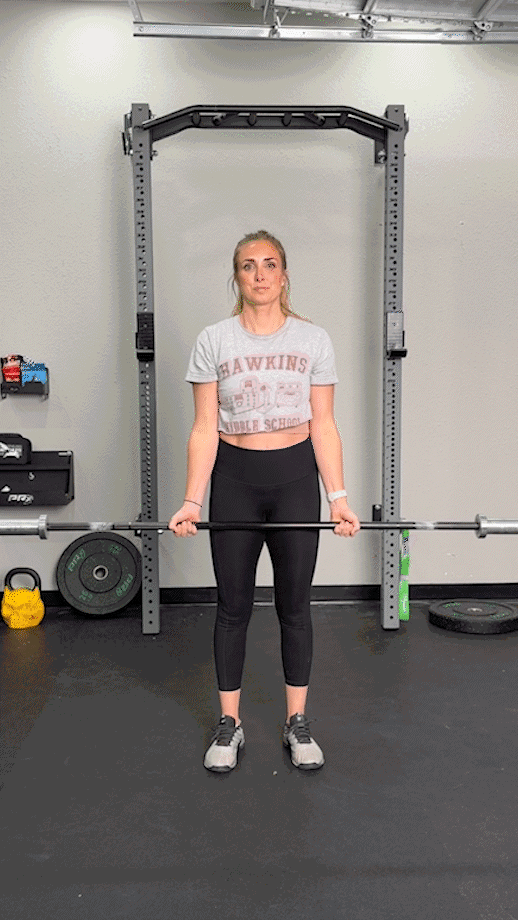
Deadlift
Muscle groups worked: Glutes, hamstrings, quads, lats, traps, calves, erector spinae, core
Why do it: The deadlift develops strength and power throughout the entire body, but studies show2 there is ample muscle activation in the spinal erectors of the lower back. So, a strength training program using deadlifts helps contribute to posture and muscle endurance against the effects of fatigue and gravity.
How to do it:
- Load a barbell to the desired weight and place it at your feet.
- Stand with your feet shoulder-width apart, back straight, core braced, and chest tall.
- Push your hips back, bend your knees, and bring your torso forward so you can reach down and grip the bar using a double overhand or mixed grip.
- Drive through your heels and extend your knees to stand while gripping the bar.
- Continue until your hips are at full extension.
- Squeeze your glutes and back muscles at the top of the movement.
- Slowly return the bar to the floor by reversing the movement.
- Reset and repeat for reps.
RELATED: 13 Deadlift Benefits
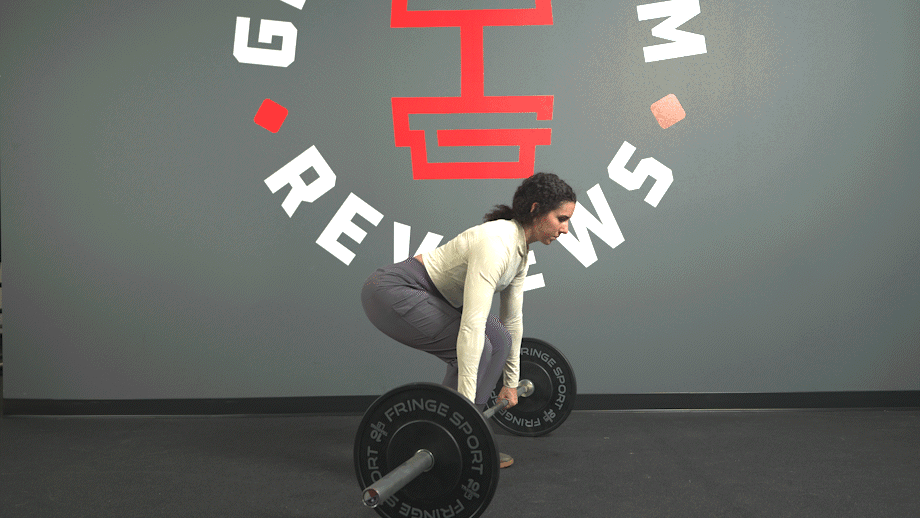
Kettlebell Swing
Muscle groups worked: Hamstrings, glutes, hips, quads, lats, delts, biceps, triceps, forearms, core
Why do it: Kettlebell swings target muscles throughout your entire body, and according to the International Journal of Exercise Science3, kettlebell swings produce a greater aerobic response compared to standard resistance training, meaning you’ll improve both your muscular and cardiovascular endurance.
How to do it:
- Grab a kettlebell by its handle and hold it with both hands in front of your body.
- Bend your knees, lean forward, and swing the kettlebell upward by thrusting your hips.
- For Russian kettlebell swings, swing the kettlebell to around chest height. For the American version, swing it fully overhead.
- The kettlebell will float in the peak position before swinging back down. Guide it as it swings back down so that it arcs through your legs and behind you.
- Thrust your hips forward again to cycle into the next rep.
- Repeat as needed.
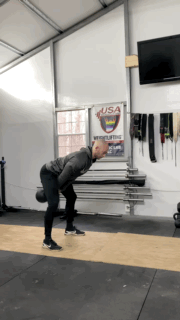
Bench Press
Muscle groups worked: Chest, shoulders, triceps
Why do it: “Just as biceps curls help you improve your muscular endurance during pulling movements, the bench press can help you build pushing and pressing strength. So, you won’t fatigue as easily when pushing heavy objects around in sports or everyday life,” says Caine.
How to do it:
- Rack a barbell and load it to the desired weight.
- Place a flat weight bench beneath the bar and lie down.
- Reach up and grip the bar slightly wider than shoulder-width.
- Take a deep breath, then exhale as you unrack the bar and position it directly over your chest. Keep your upper back pinned to the bench, core tight, and feet flat on the floor.
- Bend your elbows, keeping them tucked into your torso, to lower the bar.
- Continue until the bar lightly touches the top of your chest.
- Pause, then press the bar back to the starting position.
- Squeeze your pecs at the top, reset, and cycle into the next rep.
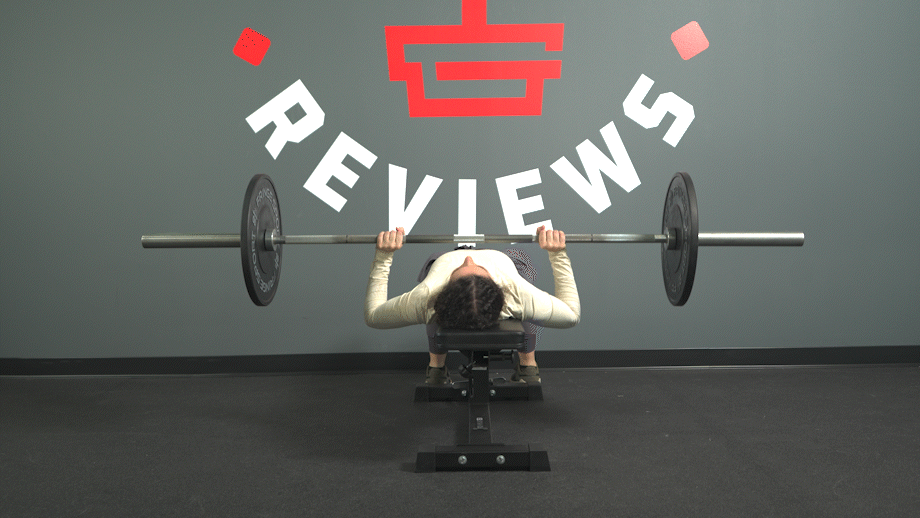
Shoulder Press
Muscle groups worked: Delts, triceps, traps, chest
Why do it: Most of us aren’t reaching overhead often in everyday life, which means you may not develop endurance with overhead movements unless you’re weight training. The shoulder press strengthens this motion so you won’t tire as quickly while dusting high shelves, mounting art or pictures to a wall, or even changing a few light bulbs. There are many shoulder press variations, but we’re recommending the dumbbell shoulder press because of its ability to help build unilateral strength and balance
How to do it:
- From a standing or seated position, select a pair of dumbbells and hold them at roughly shoulder height with your elbows fully flexed, back straight, chest tall, and core tight.
- Press the dumbbells overhead until your elbows are fully extended.
- Squeeze, then slowly return to the starting position.
- Repeat for reps.
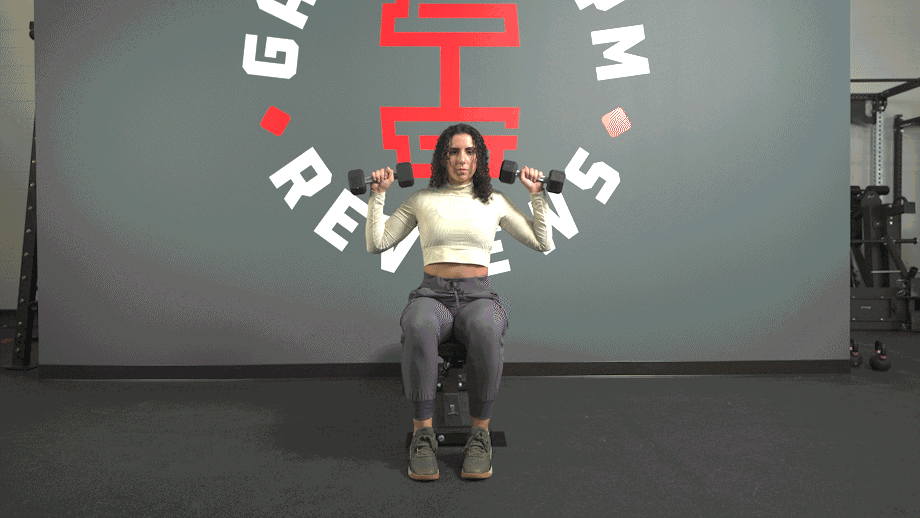
Calf Raises
Muscle groups worked: Calves
Why do it: Several leg exercises hit the calves, but only the calf raise isolates this underrated muscle group. You can also get an effective workout using just your body weight. Randomized controlled trials4 show that the calf raise exercise may improve walking performance by strengthening the muscle, so you’ll fatigue less from simply walking around if you’re performing calf raises regularly.
How to do it:
- Stand with your feet shoulder-width apart.
- Push into the floor with the balls of your feet to lift your heels.
- Squeeze your calves, then slowly return to the starting position.
- Repeat as needed.
RELATED: Calf Exercises
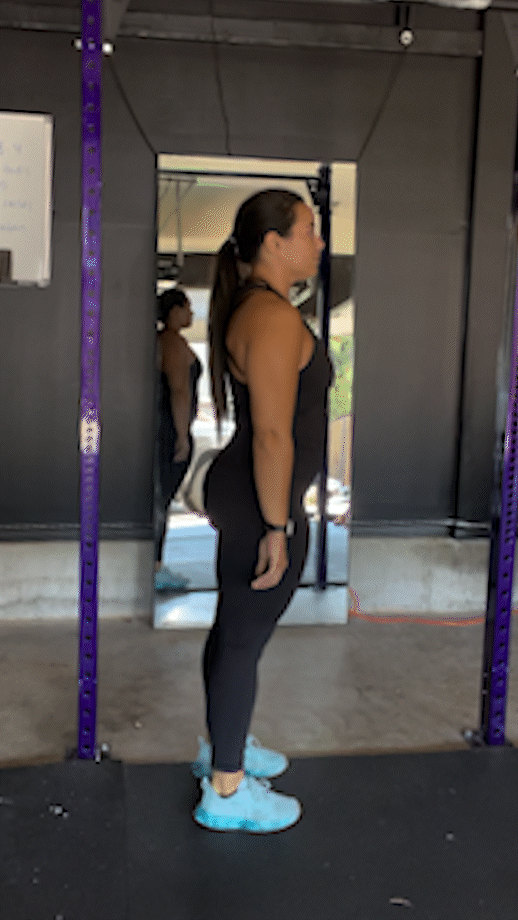
Benefits of Muscular Endurance Exercises
Building muscular endurance may not be as impressive as performing great feats of strength in the gym, but there are many health benefits that make it worthwhile.
May Help Improve Posture
The American Council on Exercise5 states that muscular endurance may improve your ability to “maintain good postural stabilization for an extended period of time.” According to EFORT Open Reviews6, “prolonged poor posture is a potential risk factor for lumbar spine injuries” and conditions such as non-specific low back pain.
So, incorporating muscular endurance exercises into your workout routine may improve your posture, reduce your risk of injury, and relieve or prevent low back pain.
May Help Decrease Cardiovascular Risks
Muscular endurance training can be heart healthy. According to the International Journal of Sports Medicine7, muscular endurance and cardiorespiratory fitness was negatively associated with cardiovascular risk factors, including “plasma glucose, serum high- and low-density lipoprotein cholesterol, triglycerides, [and] blood pressure,” meaning individuals with more endurance and cardio capacity were at less risk for these conditions.
RELATED: What Does Cardio Do to Your Body?
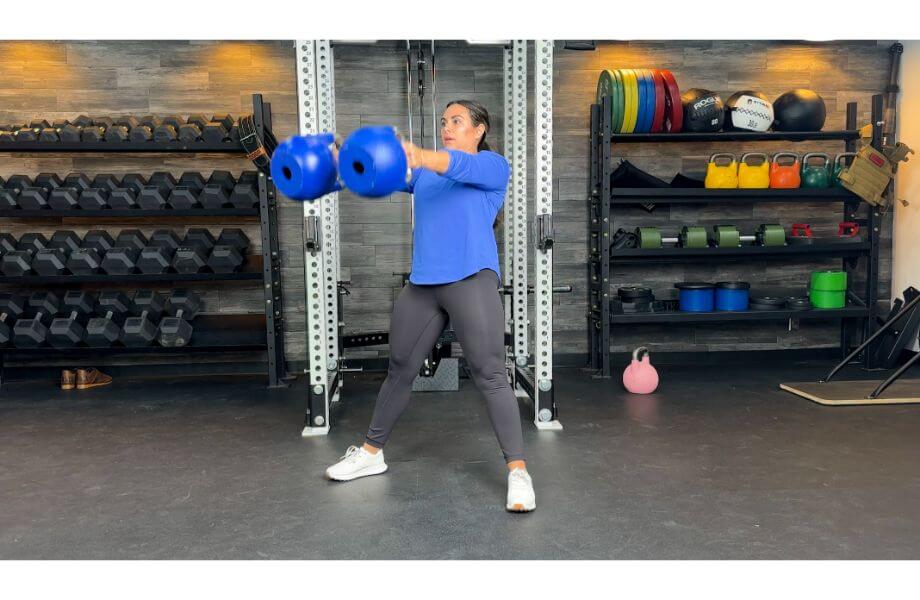
May Help Enhance Metabolism and Circulation
Progress in Molecular Biology and Translational Science8 found that muscular endurance training improves metabolism, mitochondria, and blood flow.
Improved metabolism and mitochondria translates to more effective energy consumption, which may help with weight loss or maintaining energy levels during your day. Increased blood flow, on the other hand, means faster muscle recovery, less soreness after working out, and less risk of hypertension.
How To Program Muscular Endurance Exercises
Now you know performing the above muscular endurance exercises with proper form will work wonders for your endurance, but how can you program your routine to reap the most reward from your training time?
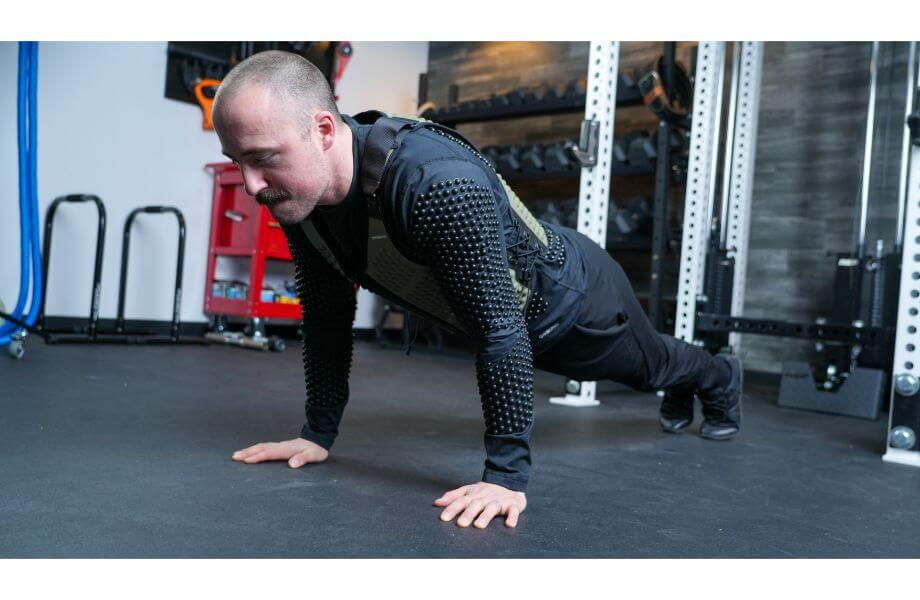
According to the National Strength and Conditioning Association9, effective muscular endurance training programs feature some or all of the following key components:
- Use lighter weight: Lift 70% of your one-rep max (1RM) or less.
- Do more sets: Complete 3 or more sets per exercise.
- Complete a higher rep range: Do between 10 and 25 reps for each set.
- Limit your rest time: Keep rest periods to 30 seconds or less between sets and exercises.
Many personal trainers and coaches incorporate circuit training to achieve this, which means combining several muscular endurance exercises in succession with minimal rest.
Here’s a sample endurance workout you can try during your next session:
| Exercise | Rounds | Reps |
| Bodyweight squat | 1-3 | 20 |
| Push-up | 1-3 | 20 |
| Russian kettlebell swing | 1-3 | 20 |
| Plank | 1-3 | 60 sec. |
Beginners should aim to complete this once taking as little rest as possible. For intermediate and advanced fitness levels, shoot to complete three rounds for time. We believe in you!
Muscular Endurance Exercises: Final Thoughts
Muscular endurance training is crucial for endurance athletes like cross-country runners, cyclists, triathletes, and more, but what about us regular folks?
Performing muscular endurance exercises provides various health benefits to improve our health and wellness and enhance our overall quality of life by making everyday tasks more manageable.
Don’t sleep on muscular endurance training and exercises!
Muscular Endurance Exercises: FAQs
What exercise uses muscular endurance?
“You can fashion just about any exercise into a muscular endurance exercise depending on how long you hold the contraction or how many reps you do,” says Caine Wilkes, OLY, USAW-L1, and GGR senior staff writer. Examples of excellent muscular endurance exercises that fit this model include bodyweight squats, lunges, deadlifts, bench and shoulder presses, and kettlebell swings.
What are three types of muscular endurance activities?
There are three distinct ways to promote muscular endurance through exercise:
– Isometric holds: Holding an isometric contraction during exercises like the plank, dead bug, wall sit, and more for a long period of time promotes improved muscular endurance.
– Higher rep ranges: Completing a high number of reps using little or no resistance helps improve muscular endurance.
– Longer durations: Performing exercise in general, whether it’s circuit training, resistance training, steady-state cardio, or otherwise, for lengthy periods of time activates slow-twitch muscle fibers and promotes endurance.
Is a plank muscular endurance or strength?
Recent studies10 show that the plank exercise is effective for increasing both muscular strength and endurance. Given the many benefits of the plank exercise, it makes an excellent inclusion into just about any training program.
What is the best exercise to increase muscular endurance?
Bodyweight exercises, like push-ups, pull-ups, and sit-ups, are great for increasing muscular endurance. Isometric exercises, like planks, wall sits, and farmer’s holds can also be an effective strategy.
RELATED: At-Home Bodyweight Workout
As always, consult a certified personal trainer or other qualified health professional when in doubt or if you have specific training questions.
References
1. Plotkin DL, Roberts MD, Haun CT, Schoenfeld BJ. Muscle Fiber Type Transitions with Exercise Training: Shifting Perspectives. Sports (Basel). 2021;9(9):127. Published 2021 Sep 10. doi:10.3390/sports9090127
2. Snyder BJ, Cauthen CP, Senger SR. Comparison of Muscle Involvement and Posture Between the Conventional Deadlift and a “Walk-In” Style Deadlift Machine. J Strength Cond Res. 2017;31(10):2859-2865. doi:10.1519/JSC.0000000000001723
3. Fortner HA, Salgado JM, Holmstrup AM, Holmstrup ME. Cardiovascular and Metabolic Demands of the Kettlebell Swing using Tabata Interval versus a Traditional Resistance Protocol. Int J Exerc Sci. 2014;7(3):179-185. Published 2014 Jul 1.
4. Van Schaardenburgh M, Wohlwend M, Rognmo Ø, Mattsson E. Calf raise exercise increases walking performance in patients with intermittent claudication. J Vasc Surg. 2017;65(5):1473-1482. doi:10.1016/j.jvs.2016.12.106
5. McCall, P. 7 Different Types of Strength and Their Benefits. ACE Blog. 2015, June 29
6. Du SH, Zhang YH, Yang QH, Wang YC, Fang Y, Wang XQ. Spinal posture assessment and low back pain. EFORT Open Rev. 2023;8(9):708-718. Published 2023 Sep 1. doi:10.1530/EOR-23-0025
7. Vaara JP, Fogelholm M, Vasankari T, Santtila M, Häkkinen K, Kyröläinen H. Associations of maximal strength and muscular endurance with cardiovascular risk factors. Int J Sports Med. 2014;35(4):356-360. doi:10.1055/s-0033-1349092
8. Booth FW, Ruegsegger GN, Toedebusch RG, Yan Z. Endurance Exercise and the Regulation of Skeletal Muscle Metabolism. Prog Mol Biol Transl Sci. 2015;135:129-151. doi:10.1016/bs.pmbts.2015.07.016
9. Clayton N, Drake J, Larkin S, et al. Foundations of Fitness Programming. National Strength and Conditioning Association (NSCA). 2015. Accessed February 23, 2024.
10. Park SK, Lee KS, Heo SJ, Jee YS. Effects of High Intensity Plank Exercise on Physical Fitness and Immunocyte Function in a Middle-Aged Man: A Case Report. Medicina (Kaunas). 2021;57(8):845. Published 2021 Aug 20. doi:10.3390/medicina57080845


